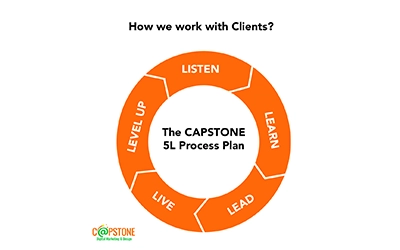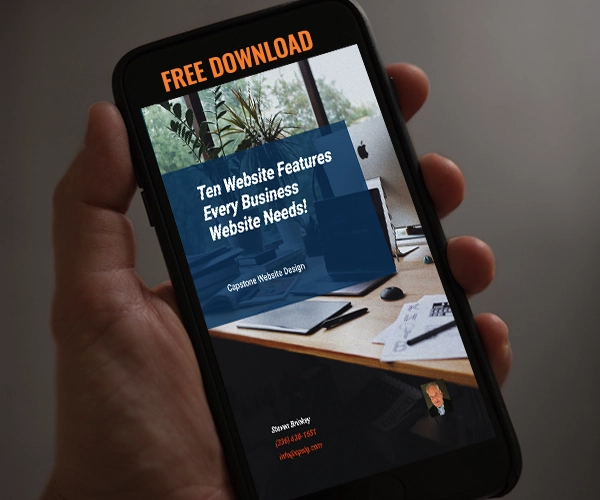
Why Use WebP Images?
Why Use WebP Images in Website Design | Unlock the Power of Image Optimization.
When it comes to website design, nothing is more important than having the right images. Discover why selecting WebP images can give you a competitive edge and optimize your site for maximum impact.
In today’s digital landscape, website design is more important than ever. With users expecting lightning-fast load times and crisp visuals, it’s crucial to optimize your site’s images for maximum impact. Enter WebP, a powerful image format that’s rapidly becoming the go-to solution for web developers and designers alike. In this blog post, we’ll dive deep into the world of WebP and explore why it’s the ideal choice for your website design needs.
Pro Tips:
Format and size images before building a web page. WebP images will need to be formatted in an image editing program such as Photoshop.
What is webP?
WebP is an image format developed by Google that offers superior compression capabilities for both lossless and lossy images. This means you can deliver high-quality images at a fraction of the file size compared to traditional formats like JPEG, PNG, and GIF. In other words, WebP helps you save on bandwidth and improve your site’s load times without sacrificing visual quality.
Faster Load Times: Compressing your images with WebP can significantly reduce their file sizes, leading to faster page load times. This not only enhances user experience but also boosts your site’s SEO performance. WebP lossless images are 26% smaller in size compared to PNGs. WebP lossy images are 25-34% smaller than comparable JPEG images at an equivalent SSIM quality index.*
Better Visual Quality: WebP images maintain excellent visual quality, even at high compression rates. This means you can deliver stunning visuals that look great on various devices without bogging down your website.
Wide Browser Support: WebP is supported by most modern browsers, including Chrome, Firefox, Edge, and Opera. As a result, you can confidently use WebP images on your site knowing that the majority of users will be able to view them seamlessly.
Lower Bandwidth Costs: With smaller file sizes, WebP images consume less bandwidth, which can help reduce your website’s hosting costs in the long run.

Design Tips for Using WebP
Ready to start incorporating WebP into your website design? Here are some tips to help you make the most of this powerful image format:
Optimize Images for Quality and Size: When converting your images to WebP, experiment with different compression settings to find the perfect balance between quality and file size. Aiming for the smallest file size without compromising visual quality is key.
Use Responsive Images: Implement responsive images by providing multiple versions of each image in different resolutions. This ensures that users on various devices receive the most optimal image for their screen size, further improving load times and user experience.
Consider Fallbacks for Unsupported Browsers: While WebP enjoys broad browser support, it’s still important to provide fallbacks for older browsers that don’t support the format. You can do this by using the element or JavaScript-based solutions to serve alternative formats like JPEG or PNG when needed.
Pro Tips:For optimal mobile-friendly performance, upload an image sized for cell phone use in the mobile phone section. Be sure to resize the height setting for mobile phone size.

Maintenance Advice for WebP Users
To keep your WebP images looking great and performing well, follow these maintenance tips:
Regularly Update Your Image Optimization Tools: As WebP continues to evolve, new optimization techniques and tools become available. Stay up to date with the latest developments to ensure you’re always maximizing your image compression capabilities.
Monitor Browser Support: Keep an eye on browser support for WebP, and adjust your fallback strategies accordingly. As more browsers adopt the format, you may be able to simplify your fallbacks or even phase them out entirely.
Test Across Devices and Browsers: Regularly test your site’s images on various devices and browsers to ensure they’re being delivered correctly and maintain their visual quality.
Conclusion
In conclusion, WebP images offer a myriad of benefits for website designers, from faster load times to better visual quality. By implementing this cutting-edge format in your site’s design, you can provide an enhanced user experience and give your site a competitive edge. So why wait? Start optimizing your images with WebP today and reap the rewards of a faster, sleeker, and more visually stunning website.
Other Resources
Google Developers – WebP
MDN Web Docs – Using WebP Images
Can I use – WebP image format
Squoosh – Online image compression tool
CSS-Tricks – Using WebP Images
These resources should help you gain a deeper understanding of WebP images and their benefits in website design.
Is your Website up to the task!
Get our free “Ten Website Features Every Business Website Needs”
Is your website performing for you? Get our FREE resource that shares the 10 features every business website should include. In addition, Stay Tuned! We will email you our short Monthly Message packed with more helpful Website and Digital Marketing News & Tips.
More Key Learning Opportunities….

What are the key elements every Entrepreneur’s website should have?

Why eCommerce?



